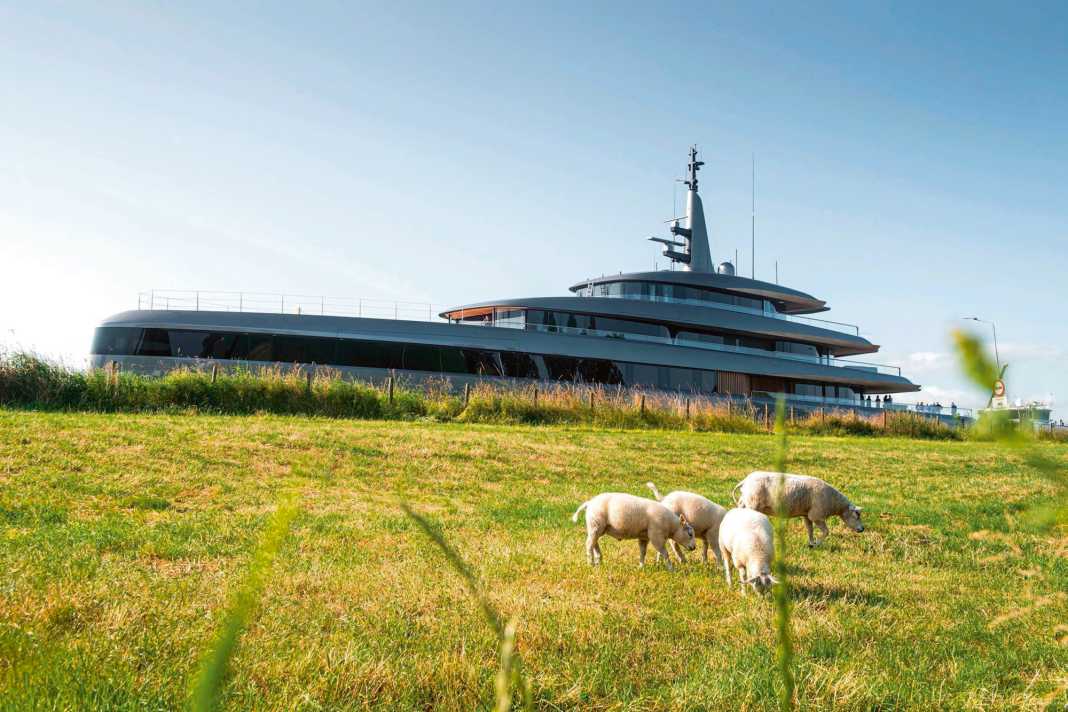




Superyachts that emit virtually no pollutants could become a reality. Reports such as the one that MAN Cryo has equipped a 118.80 metre long Giga from the Dutch Feadship shipyard with a special propulsion system give hope. On board Project 821, "Breakthrough", liquid hydrogen is stored and vaporised. The hot gas flows into the fuel cell, which enables emission-free operation - for the hotel load and shorter distances. Feadship's "Obsidian" (84 m) caused a sensation back in 2023, travelling up to 35 nautical miles fully electrically at ten knots thanks to its enormous e-storage capacity.
The development of "a benchmark for yachts"
It is no coincidence that the world's first superyacht with fuel cell propulsion comes from Feadship. In-house designer Bram Jongepier has long been interested in clean propulsion systems, and his team at De Voogt Naval Architects has been working for many years to create suitable vessels, well aware of the higher development and construction costs. This is another reason why he was looking for a way to compare different megayachts in terms of their impact on the environment and thus develop "a benchmark for yachts". "In 2018, I wrote Christmas cards to colleagues in the industry and invited them to join me on this journey," he says. "The response was overwhelming, and we met for the first time in March 2019."
The aim of the YETI Index
Representatives from shipyards such as Benetti, Damen, Lürssen and Royal Huisman came together, discussed and laid the foundations for YETI, the Yacht Environmental Transparency Index, and thus for one of the Water Revolution Foundation's top projects. This was founded by industry members at the Superyacht Forum 2018. The aim of the YETI index is to determine and reduce the environmental footprint of a yacht during the operating phase. Both the yacht industry and owners should understand the current environmental impact of their vessel - but also where it comes from and which systems are involved and how. For example, the hotel load of a superyacht alone is responsible for around 70 per cent of its total energy requirements. More specifically, YETI assesses the impact of motor and sailing yachts over 30 metres in length by comparing them with the average operating profile.
More on the topic:
The result is a single score that tells you where the ship stands - also in comparison to the rest of the fleet. At second glance, it becomes clear why this is the case and what opportunities there are to improve its environmental performance. These values are of interest to everyone involved: designers, shipyards, marinas, charterers, buyers, financiers and insurers. They all benefit from a "good" YETI score.
How the environmental impact is presented
YETI also introduces a term for the industry to express the environmental impact: ecopoints. This allows the various impacts of CO2, CO, HC, Nox or ammonia to be represented in a single figure. Specific impacts are shown separately to enable transparency and control. Put simply: the more ecopoints, the greater the negative impact on nature and people.
Two tools are currently available: YETI Lite and YETI Pro. The Lite version is freely accessible to everyone. Users enter the basic data of their yacht into the tool via a tablet, such as the length, gross tonnage and energy requirements for hotel operation. They can also tick the "Sailing yacht" box. At the end, the display shows a value, for example a 32.2, which can be easily compared with other yachts of similar dimensions. The YETI Pro version takes a more differentiated approach, the amount of data is larger and the score is at least ten per cent more accurate. The professional version asks about the engine manufacturer, fuel type, filters and catalytic converters, as well as the maximum speed. Facts about the solar panels, sail area and rig height are also included. The energy sources for hotel operations are also included, such as the proportion of shore power.
The score displayed here can be used in many different ways. It provides an overview of various areas, users can change individual data, such as waste utilisation on board, and see directly how the overall score reacts. The Pro version is therefore also an ideal data basis for refits, as even minor modernisations can have a significant impact on the overall score.

